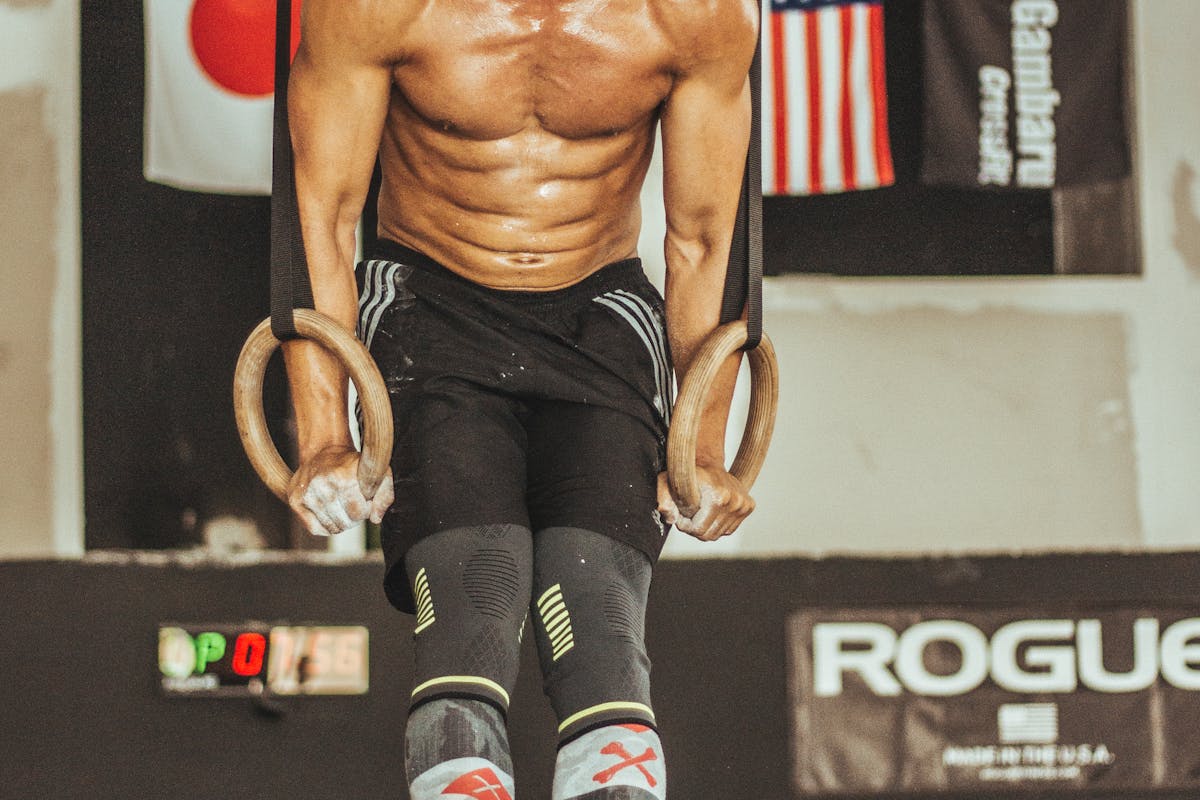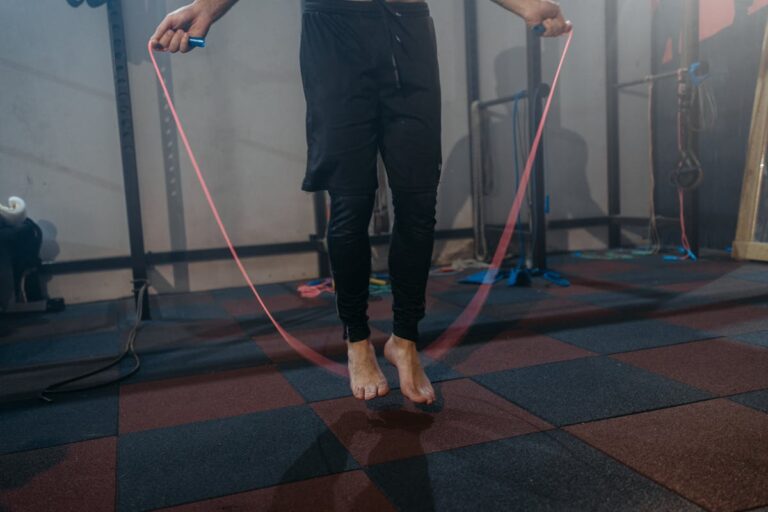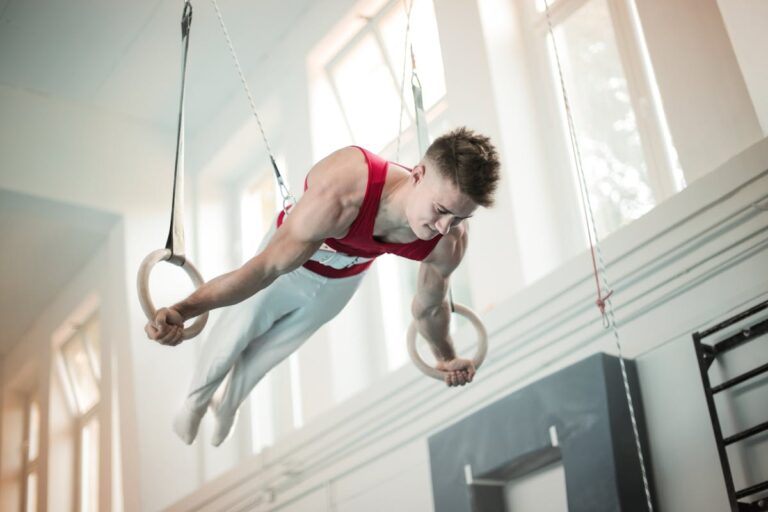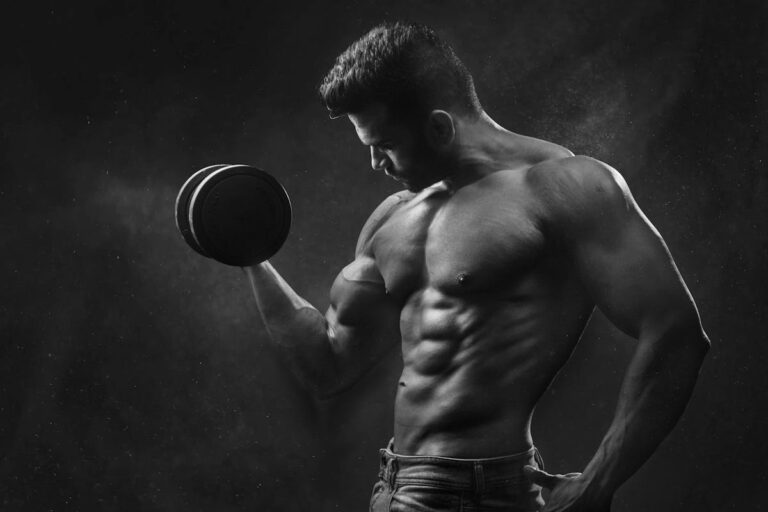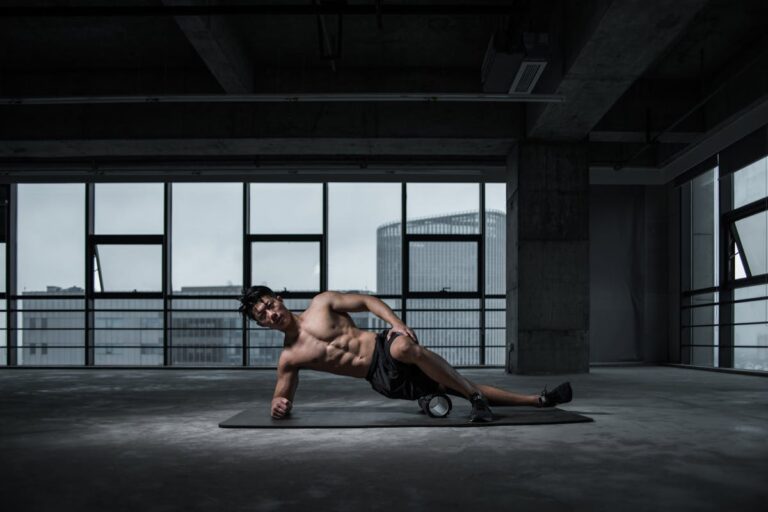Top 5 Calisthenics Leg Exercises for Beginners: How to Start
Discover the top 5 calisthenics leg exercises for beginners! Learn calisthenics, start your calisthenics journey, and master your calisthenics workout today!
Table of Contents
Why Focus on Leg Exercises in Calisthenics?Top 5 Calisthenics Leg Exercises for Beginners
Focusing on leg exercises in calisthenics is crucial for several reasons. Firstly, leg workouts help improve overall lower body strength, which is essential for daily activities such as walking, running, and lifting. Additionally, well-developed leg muscles contribute to better balance and stability, which can prevent injuries and improve athletic performance.
Secondly, leg exercises aid in enhancing cardiovascular health. Many calisthenics leg exercises, such as squats and lunges, can elevate the heart rate and improve endurance. This has the added benefit of increasing overall cardiovascular fitness, leading to better heart health and increased stamina.
Thirdly, incorporating leg exercises into a workout routine promotes better muscle balance. Often, individuals focus heavily on upper body exercises, neglecting their lower body. This can create muscle imbalances that may lead to posture issues and increase the risk of injuries. By incorporating leg exercises, one can develop a more balanced and symmetrically strong physique.
Fourthly, leg workouts can boost metabolism. Larger muscles, such as those in the legs, require more energy to function. This means that working out the legs can increase caloric burn, aiding in weight management and fat loss. As a result, leg exercises are beneficial for those aiming to lose weight or maintain a healthy body composition.
Moreover, calisthenics leg exercises offer tremendous flexibility and do not require expensive gym equipment. Exercises such as squats, lunges, and calf raises can be performed anywhere, making them accessible and convenient. This accessibility allows individuals to maintain a consistent workout routine without the need for a gym membership or specialized equipment.
Finally, focusing on calisthenics leg exercises prepares the body for more complex movements and advanced calisthenics skills. Many advanced calisthenics exercises, such as pistol squats and muscle-ups, require a strong foundation of leg strength. By building this foundation, beginners can progress to more challenging exercises with confidence and reduced risk of injury.
In summary, prioritizing leg exercises in a calisthenics routine is essential for overall strength, balance, cardiovascular health, metabolism, accessibility, and preparation for advanced skills.
Essential Equipment for Calisthenics Leg Workouts
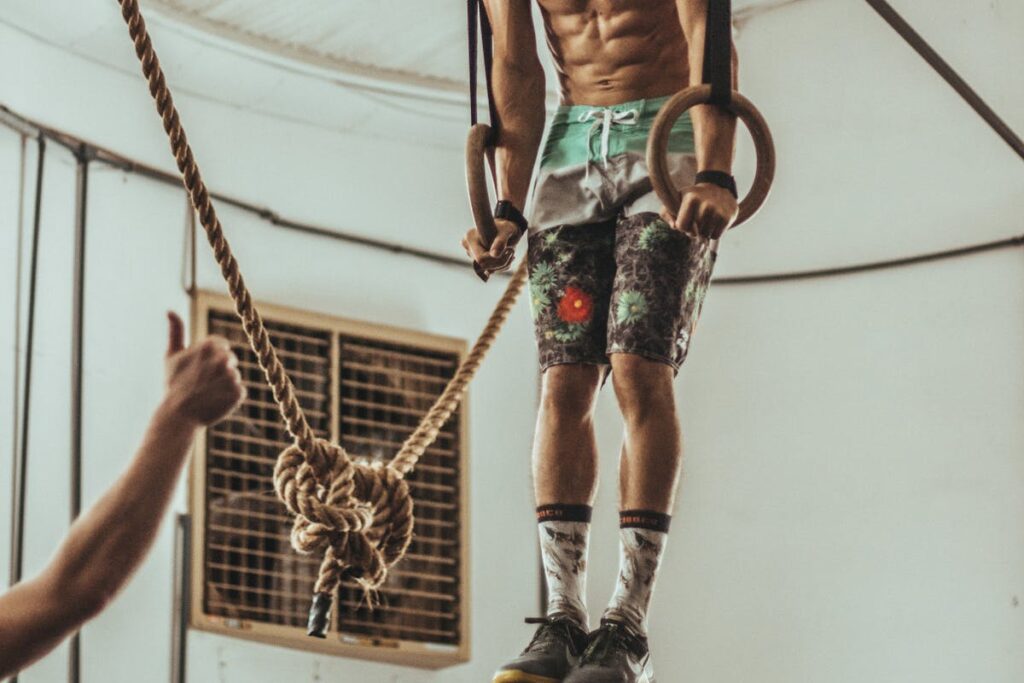
Calisthenics largely focuses on bodyweight exercises, meaning minimal equipment is required. However, certain items can augment leg workouts, providing added intensity and variety.
1. Pull-Up Bar
A pull-up bar is not solely for upper body workouts. It can facilitate leg raises, hanging knee raises, and other dynamic leg movements.
2. Resistance Bands
Resistance bands add variable resistance to exercises like squats and lunges, helping strengthen and stabilize muscles. They are also portable and versatile.
Benefits:
- Enhances muscle strength
- Improves flexibility
- Gradually increases difficulty
3. Parallettes
Parallettes can enhance exercises such as L-sits and planche leg raises. They allow for better hand positioning and deeper range of motion.
Uses:
- Improve balance
- Increase range of motion
4. Dip Bars
Dip bars can be useful for advanced leg exercises such as elevated lunges and Bulgarian split squats. They offer a stable platform for various movements.
Advantages:
- Versatility in exercises
- Stability and support
5. Weight Vest
A weight vest adds extra resistance to bodyweight exercises, making squats, lunges, and other movements more challenging.
Benefits:
- Enhances muscle and strength building
- Scalable resistance
6. Calisthenics Rings
Gymnastic rings can be used for exercises like pistol squats and leg lifts, promoting greater instability and engaging more muscle groups.
Key Points:
- Improved muscle coordination
- Increased workout intensity
7. Yoga Mat
A yoga mat provides a non-slip surface for exercises like mountain climbers, lunges, and static leg holds, ensuring comfort and safety.
Advantages:
- Enhanced grip
- Increased comfort
8. Foam Roller
For recovery, a foam roller is invaluable. It aids in muscle relaxation and can expedite post-workout recovery, reducing soreness.
Uses:
- Improves circulation
- Reduces muscle stiffness
9. Step/Box
A sturdy step or box can be utilized for exercises like step-ups and box jumps, which are great for building explosive power in the legs.
Benefits:
- Enhances cardiovascular fitness
- Builds lower-leg strength
10. Jump Rope
Jump roping can serve as an excellent warm-up to prepare the legs for more intensive exercises. It improves cardiovascular health and leg endurance.
Advantages:
- Boosts cardiovascular health
- Enhances leg endurance
Having the right equipment can significantly boost the effectiveness and enjoyment of calisthenics leg workouts. Utilize these tools to maximize strength, flexibility, and overall performance.
Warm-Up Routines for Leg Exercises
Warming up before engaging in leg exercises is crucial for preventing injuries and improving performance. Below are effective warm-up routines tailored to calisthenics leg exercises.
Light Cardio
Light cardio helps increase heart rate and blood flow to the muscles. Spend 5-10 minutes on the following activities:
- Jump Rope: Jump at a moderate pace.
- Jogging in Place: Maintain consistent movement.
- High Knees: Lift knees to hip level alternately.
Dynamic Stretches
Dynamic stretches prepare muscles for the exercises ahead. Perform each stretch for about 30 seconds:
- Leg Swings:
- Front to Back: Swing one leg forward and backward, increasing the range of motion.
- Side to Side: Swing one leg side to side, balancing on the opposite leg.
- Lunges with Twist:
- Step forward into a lunge.
- Twist the torso towards the front leg.
- Alternate legs.
- Hip Circles:
- Stand on one leg.
- Make circular motions with the other leg, first in one direction, then the opposite.
Mobility Drills
Mobility drills enhance joint flexibility and reduce the risk of strains:
- Ankle Circles:
- Stand on one foot.
- Rotate the ankle of the other foot in circles, clockwise and counterclockwise.
- Knee Hugs:
- Pull one knee towards the chest.
- Release and switch to the other knee.
Muscle Activation
Activate the muscles that will be engaged during the workout:
- Glute Bridges:
- Lie on your back with knees bent.
- Lift hips towards the sky.
- Squeeze the glutes, then lower back down.
- Bodyweight Squats:
- Position feet shoulder-width apart.
- Lower into a squat with a straight back.
- Stand back up and repeat.
Foam Rolling (Optional)
Foam rolling can help release muscle tension:
Use a foam roller to gently roll out the quads, hamstrings, and calf muscles for 1-2 minutes each.
By adhering to these warm-up routines, individuals can significantly improve their leg workout sessions and contribute to a safer, more productive calisthenics journey.
Exercise 1: Squats – The Foundation of Leg Strength
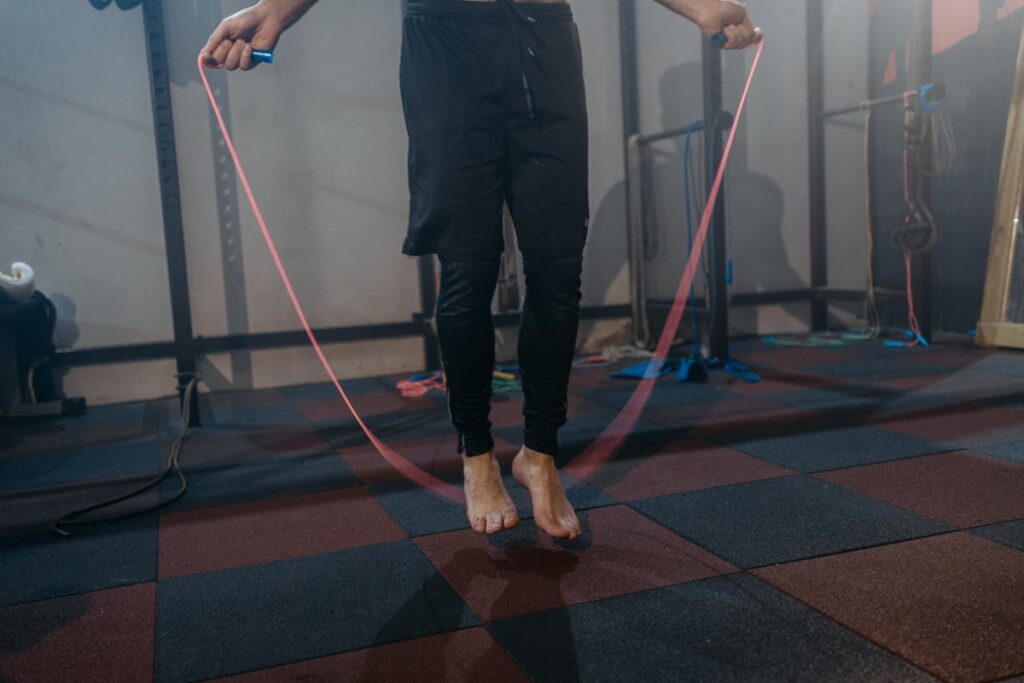
Squats are fundamental to any leg workout routine. They engage multiple muscle groups, including the quadriceps, hamstrings, glutes, and calves. Beginners can start with bodyweight squats and, as they build strength, progress to more advanced variations.
How to Perform a Basic Squat
- Start Position:
- Stand with feet shoulder-width apart.
- Keep toes pointed slightly outward.
- Engage the core, and keep the chest up.
- Lowering Phase:
- Bend the knees while keeping the back straight.
- Ensure the knees track over the toes.
- Lower the body until thighs are parallel to the ground.
- Rising Phase:
- Push through the heels.
- Return to the starting position.
- Fully extend the hips at the top.
Key Benefits
- Strength Building: Squats are a full-leg exercise facilitating strength gains in major muscle groups.
- Stability: Enhances core stability and overall balance.
- Flexibility: Improves the flexibility of the hips, knees, and ankles.
- Functional Fitness: Mimics everyday movements, aiding in daily activities.
Common Mistakes
- Knee Position: Avoid letting knees cave inward.
- Back Alignment: Keep the spine neutral to prevent lower back strain.
- Depth Control: Avoid going too shallow or too deep, which can compromise form.
Variations for Progression
- Goblet Squat: Hold a weight close to the chest.
- Jump Squat: Add an explosive jump to the top of the movement.
- Pistol Squat: Perform a one-legged squat for increased difficulty.
- Wall Squat: Hold position against a wall to build endurance.
Recommended Sets and Reps
- For beginners, aim for:
- 3 sets of 10-15 reps
- Rest for 60 seconds between sets.
Equipment
- No Equipment Needed: Bodyweight squats require no equipment.
- Optional: Use of dumbbells, resistance bands, or a weight vest for added intensity.
Incorporating squats into a calisthenics routine is vital for leg strength and overall fitness. This exercise lays a solid foundation for more complex movements and workouts.
Exercise 2: Lunges – Building Balance and Muscle
Lunges are an essential exercise for those beginning their calisthenics journey, offering numerous benefits in terms of muscle building and balance enhancement. They target multiple muscle groups in the legs and buttocks, making them a comprehensive lower body workout.
Benefits of Lunges:
- Muscle Building: Target the quadriceps, hamstrings, glutes, and calves.
- Enhanced Balance: Improves overall balance and coordination.
- Joint Flexibility: Helps increase flexibility in the hips and knees.
- Core Stability: Engages the core muscles for stability.
How to Perform a Lunge:
- Starting Position: Stand upright with feet hip-width apart.
- Step Forward: Take a large step forward with your right leg.
- Lower Your Body:
- Bend both knees to lower your body.
- Ensure your right thigh is parallel to the floor.
- Keep the right knee directly above the ankle.
- Push Back: Push off your right foot to return to the starting position.
- Repeat: Perform the same movement with the left leg.
Tips for Proper Form:
- Keep Back Straight: Maintain a straight back and avoid leaning forward.
- Engage Core: Keep the core muscles tight to maintain balance.
- Knee Alignment: Prevent the front knee from extending past the toes.
- Controlled Movements: Move slowly and deliberately for maximum effectiveness.
Variations of Lunges:
- Walking Lunges: Instead of returning to the starting position, continue stepping forward in a walking motion.
- Reverse Lunges: Step backward instead of forward, which lessens the impact on knees and targets the glutes more effectively.
- Side Lunges: Step to the side, lowering your body to target inner thighs and hip flexibility.
- Elevated Lunges: Place the rear foot on an elevated surface (like a bench) to increase the intensity on the front leg.
Lunges in a Routine:
Incorporate lunges into a workout routine 2 to 3 times a week for best results. Beginners should aim for 2 sets of 10-12 repetitions on each leg. Increase the sets and repetitions gradually as strength improves.
Equipment and Modifications:
- Body Weight: Lunges can be performed using just body weight.
- Dumbbells: Hold dumbbells in each hand to add resistance.
- Resistance Bands: Use bands around the thighs for additional tension.
Safety Considerations:
- Warm-up: Always perform a proper warm-up before starting lunges to prevent injury.
- Listen to Your Body: If experiencing any pain, stop and reassess your form.
- Consult a Professional: Seek advice from a fitness professional if unsure about form or technique.
Exercise 3: Calf Raises – Strengthening the Lower Leg
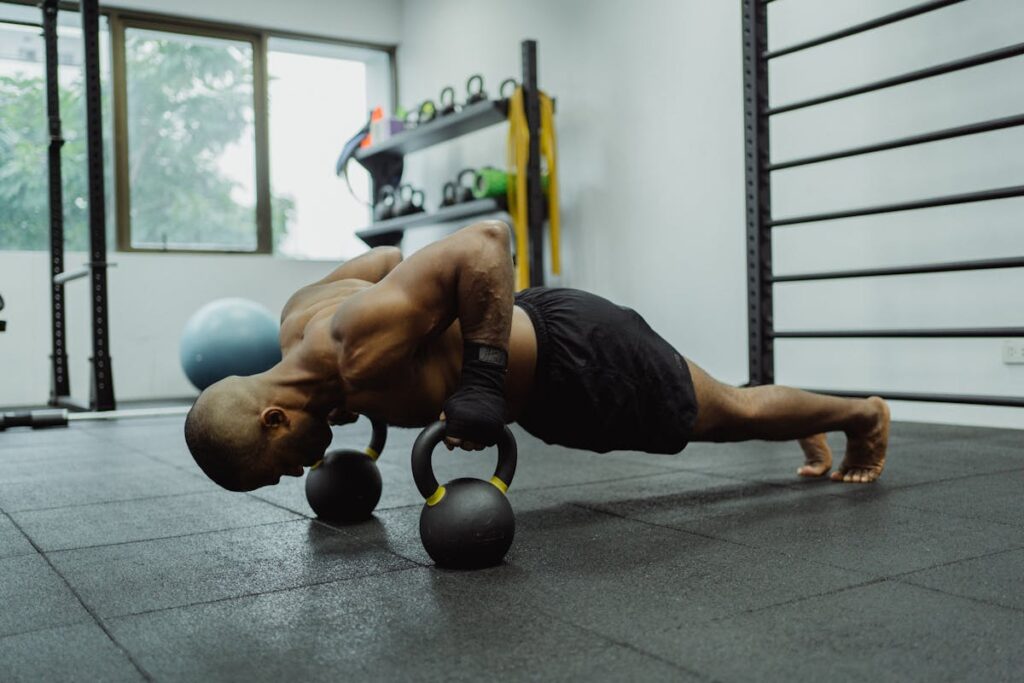
Calf raises are an effective exercise to develop the strength and definition of the lower leg muscles, particularly the gastrocnemius and soleus. This simple movement can be performed anywhere and requires no equipment, making it perfect for beginners in their calisthenics journey.
How to Perform Calf Raises
- Starting Position:
- Stand upright with feet hip-width apart.
- Keep arms relaxed at the sides or place hands on a stable surface for balance.
- Execution:
- Lift heels off the ground slowly by pushing through the balls of the feet.
- Raise the body upwards until standing on tiptoes.
- Hold the position at the peak contract for a moment.
- Lower heels back to the starting point in a controlled manner.
- Repetitions and Sets:
- Perform 2-3 sets of 12-15 repetitions.
- Rest for 30-60 seconds between sets.
Benefits of Calf Raises
- Strengthens Muscles:
- Targets the calf muscles, improving strength and endurance.
- Improves Balance:
- Enhances stability and coordination through regular practice.
- Enhances Lower Leg Definition:
- Contributes to the aesthetic appeal of toned lower legs.
Common Mistakes to Avoid
- Bouncing:
- Avoid using momentum; focus on slow, controlled movements.
- Incorrect Foot Position:
- Ensure feet are facing forward and maintain an even distribution of weight.
- Neglecting Range of Motion:
- Fully extend and contract the calf muscles for maximum benefit.
Variations
- Single-Leg Calf Raise:
- Perform the exercise on one leg for an increased challenge, balancing with one hand on a supportive surface.
- Elevated Calf Raise:
- Stand on a sturdy platform or step, allowing heels to drop below the level of toes for a deeper stretch.
- Seated Calf Raise:
- Sit on a chair, place feet flat on the ground, and lift heels while keeping balls of feet in contact with the floor.
Incorporating calf raises into a calisthenics routine aids in building foundational lower leg strength essential for more advanced movements. Consistency and attention to form are key to maximizing the effectiveness of this exercise.
Exercise 4: Step-Ups – Enhancing Coordination and Power
Step-ups are an excellent calisthenics exercise for beginners, targeting the legs and enhancing overall coordination and power. This exercise focuses on the quadriceps, hamstrings, and glutes while also engaging the core for stability. Step-ups can be performed with minimal equipment, making them accessible for everyone. Here’s a guide on how to effectively execute step-ups and the benefits they offer:
How to Perform Step-Ups:
- Choose a Stable Surface:
- Find a sturdy bench, box, or step that can support your weight.
- The surface should be around knee height.
- Starting Position:
- Stand upright facing the surface.
- Feet should be shoulder-width apart.
- Arms can be at your sides or on your hips for balance.
- Step-Up Movement:
- Place your right foot firmly on the bench.
- Push through your heel to lift your body upward.
- Bring your left foot up to meet the right foot on the bench.
- Step-Down Movement:
- Step back down with your left foot.
- Follow with your right foot to return to the starting position.
- Alternate Legs:
- Repeat the movement, starting with the left foot.
- Continue alternating legs for the desired number of repetitions.
Tips for Proper Form:
- Keep the chest up and core engaged throughout the exercise.
- Ensure the knee of the stepping leg aligns with the ankle to avoid injuries.
- Control the movement both when stepping up and stepping down.
Benefits of Step-Ups:
- Strength Building: Effectively strengthens the quadriceps, hamstrings, and glutes.
- Coordination Enhancement: Improves coordination and balance by working one leg at a time.
- Functional Fitness: Mimics everyday actions like climbing stairs, making it practical for daily activities.
- Low Impact: Gentle on the joints compared to high-impact leg exercises.
- Versatility: Can be adjusted for difficulty by increasing bench height or adding weights.
Variations to Try:
- Weighted Step-Ups: Hold dumbbells in each hand for added resistance.
- Side Step-Ups: Step up from the side for a lateral motion challenge.
- Explosive Step-Ups: Incorporate a hop at the top to add a plyometric component for power training.
Incorporating step-ups into a calisthenics routine can yield significant improvements in leg strength and overall athletic ability. Beginners should aim to start with lower heights and gradually progress as strength and confidence grow.
Exercise 5: Glute Bridges – Targeting the Posterior Chain
Glute bridges are a fundamental calisthenics exercise, perfect for engaging and strengthening the posterior chain. This exercise primarily activates the glutes, lower back, and hamstrings, offering a comprehensive lower body workout without requiring any special equipment. Glute bridges can be easily done at home, making them ideal for beginners to include in their fitness routine.
Benefits of Glute Bridges
- Strengthen Glutes: These exercises target the gluteus maximus, medius, and minimus, essential for hip stability and power.
- Improve Core Strength: Glute bridges engage the lower back and abdominal muscles, enhancing core stability.
- Enhance Hip Flexibility: By stretching and activating hip flexors, glute bridges promote better hip mobility.
- Prevent Lower Back Pain: Strengthening the posterior chain helps alleviate and prevent lower back discomfort.
How to Perform Glute Bridges
- Starting Position:
- Lie on your back with your knees bent and feet flat on the floor, hip-width apart.
- Place your arms by your sides with palms down for support.
- Engage the Core:
- Before lifting, engage your core muscles by drawing your navel towards your spine.
- Lift the Hips:
- Press through your heels and squeeze your glutes to lift your hips off the floor until your body forms a straight line from knees to shoulders.
- Hold and Squeeze:
- At the top of the movement, hold the position for a few seconds while squeezing your glutes tightly.
- Lowering Down:
- Slowly lower your hips back to the starting position without touching the floor completely. Maintain tension in your glutes throughout the movement.
- Repeat:
- Perform 10-15 repetitions per set, and aim for 2-3 sets depending on your fitness level.
Tips for Effective Glute Bridges
- Feet Placement: Ensure feet remain flat on the floor and hip-width apart to maintain balance and proper form.
- Controlled Movement: Focus on a slow, controlled lift and lower to maximize muscle engagement.
- Avoid Overextension: Do not overextend your lower back at the top of the movement; avoid creating an arch.
- Breathing: Inhale while preparing and exhale while lifting your hips.
By incorporating glute bridges into a workout regimen, beginners will develop a robust posterior chain, leading to improved overall strength and stability.
Tips for Progressing in Calisthenics Leg Exercises
Progression in calisthenics leg exercises requires a blend of technique, consistency, and variation. Following these tips can help ensure steady improvements and avoid plateaus.
- Master the Basics: Building a strong foundation in basic exercises like squats, lunges, and calf raises is crucial. They form the groundwork for more advanced movements.
- Consistency is Key: Regular practice leads to improvements. Schedule leg workouts at least 2-3 times a week for optimal results.
- Proper Form and Technique: Always prioritize form over quantity. Performing exercises correctly helps in effectively targeting the right muscles and preventing injuries.
- Gradual Progression: Increase difficulty level gradually. Introduce more challenging variations such as pistol squats or single-leg calf raises when comfortable with basic movements.
- Use Pauses and Tempos: Incorporate pauses at the bottom of movements and vary the speed of your exercises. This enhances muscle activation and strength.
- Mind-Muscle Connection: Focus on the muscles being worked. This intentional engagement can improve the quality of each rep.
- Balanced Training: Balance your routine with a mix of strength and flexibility exercises. This ensures overall leg development and reduces the risk of imbalances.
- Rest and Recovery: Allow muscles to recover with adequate rest periods between workout days and sufficient sleep at night. Recovery is essential for muscle growth and progress.
- Track Progress: Maintain a workout journal to log exercises, reps, and sets. Tracking progress helps in setting and achieving fitness goals.
- Adapt and Modify: Adjust exercises according to personal fitness levels and body responses. Modifying exercises can keep the routine effective and aligned with individual progress.
Diversifying routines, staying committed, and listening to the body are pivotal for advancing in calisthenics leg exercises.
Common Mistakes to Avoid in Calisthenics Leg Workouts
Engaging in calisthenics leg workouts can be effective and rewarding, but several common mistakes can hinder progress and increase the risk of injury. Avoid these pitfalls for a safer and more efficient journey.
1. Ignoring Warm-ups
Skipping warm-up exercises is a frequent mistake. Warm-ups prepare muscles and joints for the physical stress ahead, reducing the risk of injury. Failing to warm up can lead to strains and sprains.
2. Poor Form and Technique
- Knee Position: Incorrect knee alignment, such as letting the knees cave inward, can lead to joint stress and injury.
- Back Posture: Rounding or arching the back during movements like squats compromises spinal health.
- Foot Placement: Improper foot alignment affects balance and exercise effectiveness.
3. Overtraining
Overtraining occurs when there’s too little rest between workouts. This mistake leads to muscle fatigue, impairs recovery, and increases the risk of overuse injuries. Rest days are crucial for muscle repair and growth.
4. Unequal Development
Focusing solely on one type of exercise, such as squats, can lead to muscle imbalances. A comprehensive leg workout regime should include exercises targeting various muscle groups, including hamstrings, quadriceps, calves, and glutes.
5. Neglecting Progression
Sticking to the same exercise intensity can stall progress. Progressive overload, gradually increasing exercise difficulty, is essential for continued muscle growth and strength. Neglecting this principle can lead to plateaus.
6. Inadequate Nutrition
Nutrition plays a critical role in workout success. Insufficient protein intake hampers muscle repair. Poor overall nutrition can cause fatigue, reducing workout performance and recovery.
7. Ignoring Mobility and Flexibility
Ignoring stretches and mobility exercises can result in stiffness and reduced range of motion. Incorporating flexibility training helps enhance performance and reduces the risk of injury.
8. Relying on Momentum
Using momentum rather than controlled movements reduces exercise effectiveness. Ensuring slow, controlled motions engages the targeted muscles fully, leading to better results and decreased injury risk.
9. Lack of Variety
Sticking to the same few exercises can result in monotony and slow progress. Incorporating various exercises keeps workouts interesting and ensures balanced muscle development.
10. Inconsistent Routine
Consistency is vital for progress. Sporadic workout schedules can lead to slower gains and decreased strength. Maintaining a regular routine is key to achieving long-term goals.
Avoiding these common mistakes can lead to more effective, safe, and rewarding calisthenics leg workouts, helping individuals achieve their fitness goals efficiently. Consistency, proper technique, and a holistic approach to fitness ensure a successful calisthenics journey.
Combining Leg Exercises into a Full Calisthenics Routine
Creating a balanced calisthenics routine involves integrating various exercises targeting different muscle groups. For beginners focusing on leg strength, a full calisthenics routine should include a combination of the top leg exercises outlined previously. By doing so, they can ensure a comprehensive workout that promotes muscle growth, stability, and endurance.
Sample Routine Structure
- Warm-Up (5-10 minutes):
- Jumping jacks
- Leg swings
- Dynamic stretches
- Main Workout:
- Bodyweight Squats: 3 sets of 15-20 reps
- Lunges: 3 sets of 10-15 reps per leg
- Calf Raises: 3 sets of 20 reps
- Glute Bridges: 3 sets of 15 reps
- Step-Ups: 3 sets of 12-15 reps per leg
- Cool-Down (5-10 minutes):
- Static stretching for hamstrings, quadriceps, and calves
- Gentle leg muscle massages
Implementing Rest Days
An effective calisthenics routine should include rest days to allow muscles to recover. Beginners can start with three workout days per week, with at least one rest day in between. This helps in avoiding overtraining and minimizes the risk of injuries.
Progressive Overload
As strength and endurance improve, individuals should increase the intensity of the exercises. This can be achieved by:
- Adding more repetitions or sets
- Decreasing rest time between sets
- Incorporating advanced variations (e.g., pistol squats for bodyweight squats)
Integrating Cardio
Cardiovascular exercises can further complement leg workouts by enhancing endurance and overall fitness. Some cardio options include:
- Running or jogging
- Jump rope
- High knees
- Burpees
Monitoring Progress
Tracking progress is crucial. Keeping a journal or using an app to log exercises, repetitions, sets, and any notes on performance can help in making necessary adjustments to the routine. Monitoring improvements in strength and endurance will provide motivation and ensure continued development.
Nutrition and Hydration
Proper nutrition and hydration are key to supporting an effective workout routine. Consuming a balanced diet with a mix of proteins, carbohydrates, and fats aids muscle recovery. Staying hydrated before, during, and after workouts is essential to maintain performance and health.
By combining these calisthenics leg exercises into a structured routine, beginners can effectively strengthen their legs while fostering overall fitness and health.
Nutrition Tips for Optimal Performance and Recovery
Nutrition is essential for anyone engaging in calisthenics, especially beginners. Proper fueling and recovery help enhance performance and prevent injuries.
- Balanced Diet: A well-rounded diet with the right balance of macronutrients (carbohydrates, proteins, fats) is crucial. It provides energy and supports muscle growth and repair.
- Hydration: Water intake is vital for muscle function and overall bodily processes. It is recommended to drink water before, during, and after workouts.
- Pre-Workout Nutrition:
- Consume a small meal or snack with complex carbohydrates and protein about 30-60 minutes before exercising.
- Avoid heavy and high-fat meals right before a workout to prevent sluggishness.
- Post-Workout Nutrition:
- A combination of protein and carbohydrates should be consumed within 30 minutes post-exercise. This aids muscle recovery and replenishes glycogen stores.
- Good options include a protein shake or a balanced meal with lean protein and whole grains.
- Protein Intake: Adequate protein supports muscle repair and growth. Sources include lean meats, dairy, legumes, and plant-based proteins like tofu and tempeh.
- Carbohydrates: Carbs are the body’s primary energy source. Incorporating whole grains, fruits, and vegetables can ensure sustained energy levels.
- Healthy Fats: Include sources of omega-3 and omega-6 fatty acids like fish, nuts, seeds, and avocados. They support joint health and reduce inflammation.
- Micronutrients:
- Vitamins and minerals are essential for muscle function and recovery. Ensure a sufficient intake of calcium, vitamin D, magnesium, and potassium.
- Incorporate a variety of vegetables, fruits, and whole foods to meet micronutrient needs.
- Regular Meals: Eating at regular intervals maintains energy levels and promotes a constant supply of nutrients to the body.
- Supplements:
- Consider supplements like whey protein, BCAAs, and multivitamins, if dietary intake is insufficient.
- Always consult a healthcare professional before beginning any supplement regimen.
Tracking Progress and Setting Realistic Goals
To succeed in calisthenics, tracking progress and setting realistic goals is essential. Keeping a record of exercises, reps, and sets ensures measurable improvements and identifies areas needing work. Here are some effective strategies:
- Maintain a Workout Journal:
- Write down each exercise, the number of sets, and repetitions.
- Track progress weekly to notice improvements and plateaus.
- Include notes on how each session felt.
- Use Progress Photos:
- Take photos monthly to visually document progress.
- Wear the same clothes for consistency.
- Ensure similar lighting and angles for accurate comparisons.
- Set SMART Goals:
- Specific: Define clear, specific objectives.
- Measurable: Ensure goals have a clear metric for tracking progress.
- Achievable: Set realistic targets based on current fitness levels.
- Relevant: Align goals with overall fitness aspirations.
- Time-bound: Establish a timeline to achieve these goals.
- Utilize Apps and Wearables:
- Fitness apps can track workouts and progress.
- Wearable devices monitor various metrics like steps, heart rate, and calories burned.
- Sync data between devices and apps for comprehensive tracking.
- Regular Assessments:
- Perform fitness assessments monthly or bi-monthly.
- Test flexibility, strength, and endurance to gauge overall fitness.
- Adjust workouts based on assessment results.
- Celebrate Milestones:
- Recognize and celebrate small achievements.
- Use rewards to maintain motivation.
- Share success with workout partners or on social media for added encouragement.
- Adjust Goals as Needed:
- If progress stalls, reevaluate and adjust goals.
- Be flexible to change course based on body feedback and new findings.
- Continuously challenge oneself with new, realistic objectives.
Final Thoughts and Encouragement for Beginners
Embarking on a calisthenics journey, especially as a beginner, can often feel daunting. However, it’s important to remember that everyone starts somewhere, and progress in calisthenics comes from consistency, patience, and effort. Beginners should focus on mastering basic exercises and gradually increasing the intensity and complexity of their workouts as they build strength and confidence.
Key Tips for Beginners
- Start Slow and Steady
- Avoid trying to perform advanced exercises right away.
- Concentrate on foundational movements to build a strong base.
- Form Over Quantity
- Prioritize proper form to prevent injuries and maximize benefits.
- Consider quality reps more valuable than high rep counts.
- Consistent Practice
- Set a regular workout schedule to maintain progress.
- Consistency is essential for building muscle and improving performance.
- Listen to Your Body
- Rest when necessary to allow for muscle recovery.
- Pay attention to any signs of pain and adjust exercises accordingly.
- Stay Motivated
- Track progress through video recordings or journaling.
- Celebrate small milestones to stay motivated.
Common Mistakes and Solutions
- Neglecting Warm-ups
- Always start with a proper warm-up to prepare muscles.
- Skipping Leg Days
- Balance workouts to include all muscle groups for overall harmony.
- Overtraining
- Ensure adequate rest between workouts to avoid burnout.
Inspirational Quotes
“The journey of a thousand miles begins with one step.” – Lao Tzu
“Strength doesn’t come from what you can do. It comes from overcoming the things you once thought you couldn’t.” – Rikki Rogers
By following these guidelines, beginners can ensure they stay on the right path as they venture into the world of calisthenics. Starting small and gradually building up is the key to long-term success.
